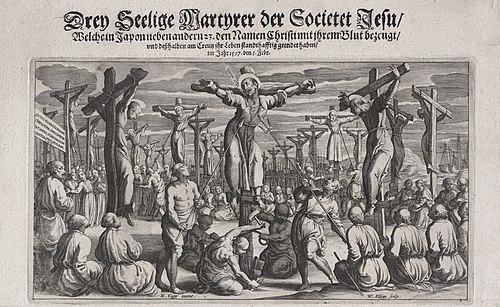
The 26 Martyrs of Japan refer to a group of Catholic Christians executed during the 17th century in Japan, a period marked by religious persecutions. Canonized by the Catholic Church in 1862, these martyrs are often commemorated for their unwavering faith in the face of oppression.
In the early 17th century, the Tokugawa shogunate in Japan implemented an isolationist policy, banning Christianity due to concerns about foreign influence. Missionaries and Christians faced persecution, leading to a series of tragic events, including the execution of the 26 martyrs.
The 26 Martyrs
This diverse group included clergy, laypeople, Japanese, and foreigners. Among them were Franciscans, Jesuits, and lay members. They were arrested in 1596, accused of refusing to renounce their Christian faith despite government pressure.
Their Execution
On February 5, 1597, the 26 martyrs were crucified in Nagasaki. Their deaths were slow and painful, symbolizing their steadfast commitment to their beliefs. The event marked a turning point in Japan's relationship with Christianity, reinforcing the crackdown on the religion.
Canonization and Legacy
In 1862, Pope Pius IX canonized the 26 Martyrs of Japan, recognizing them as saints and martyrs of the Catholic Church. Their memory is celebrated annually on February 5. Their sacrifice is often seen as an example of perseverance in the face of adversity and has inspired believers throughout the centuries.
Impact on Religious Tolerance in Japan
While Christianity faced persecution in Japan for centuries, the late 19th century marked the beginning of a period of religious tolerance. Today, the 26 Martyrs of Japan are commemorated as symbols of religious resistance and courage in Japanese history.
Artanisen, Public domain, https://fr.wikipedia.org/wiki/Vingt-six_martyrs_du_Japon#/media/Fichier:M%C3%A4rtyrer_von_Nagasaki_1628.jpg


0 comments: